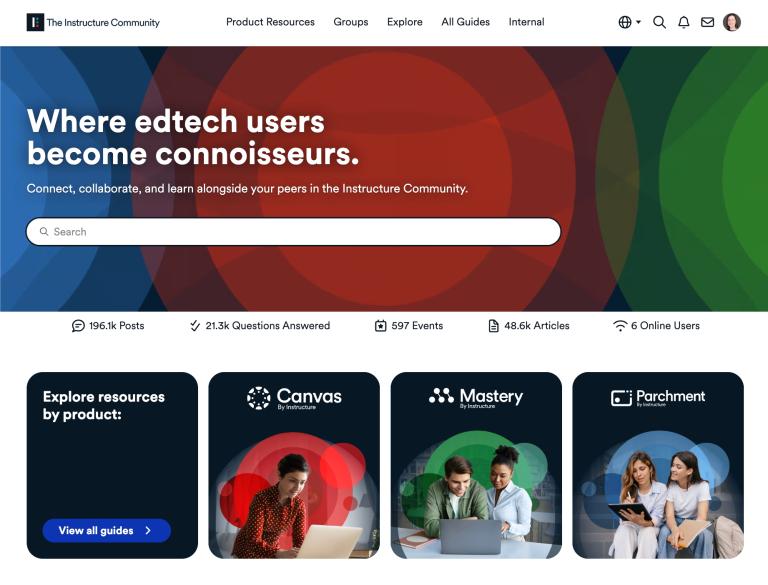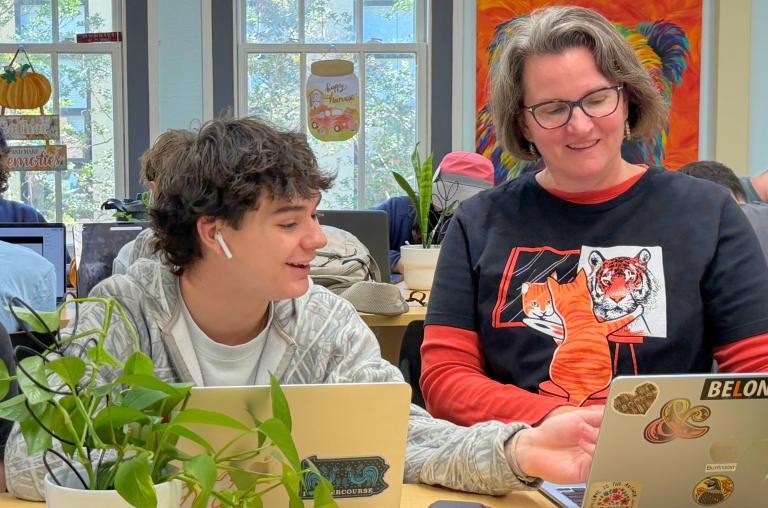The ASU+GSV Summit 2024, a cornerstone event in the edtech conference calendar, once again brought together a diverse array of thought leaders, innovators, educators, investors, and other stakeholders from across the globe to explore the intersection of education and technology. Against the backdrop of a rapidly evolving technological landscape, this year's Summit delved deep into the transformative potential of artificial intelligence (AI) in shaping the future of learning, even adding the new AIR Show as a free, educator-centric event to showcase AI tools, use cases, and actionable best practices.
The Instructure team was honored to participate in these conversations and learn from all the sessions, meetings, and casual run-ins with brilliant people working to understand, define, and support the future of learning. From the ubiquitous presence of AI-driven products to the pressing concerns surrounding data safety and ethical implications, this year's Summit was a catalyst for robust dialogue and forward-thinking initiatives aimed at reimagining the educational paradigm. Here are seven key themes and takeaways from this year's ASU+GSV Summit.
Thoughtful AI Integration: AI is dominating the conversation about education technology and making its way into the classroom and back office. Many AI tools are relying on GPT-like chat interfaces for tutoring and content generation while others are pushing the boundaries of innovation. Amidst this progress, concerns loom large around data safety and the social implications of AI integration, and educators are asking for additional training to most effectively leverage these tools.
Policy Gaps in Education: Despite AI's growing presence, educational institutions are grappling with a lack of solid policies. A staggering 79% of K12 districts lack clear guidelines, as revealed by an EdWeek Market Brief survey. Higher ed institutions are in a similar situation–a recent Inside Higher Ed poll found that only one in five colleges and universities had published AI policies. The call for guidance in navigating AI's ethical and practical dimensions is clear, but there is also recognition that policies need to remain flexible as our understanding and use of AI evolves.
Co-designing AI with Stakeholders: It's imperative to involve educators, students, and parents in the co-design process of AI tools. This collaborative approach helps to ensure that AI is contextual, safe, and effective. Moreover, underserved communities must be prioritized, and efforts should consider fostering more person-to-person interactions alongside technological advancements.
Revamping Education for Career Readiness: The traditional 'Portrait of a Graduate' framework is under scrutiny in light of evolving job markets and increasingly tech-enabled learning. There's a pressing need to revamp educational systems to better align with career readiness. K12 and higher education institutions must work in tandem to bridge the gap and prepare students effectively for evolving job landscapes.
Mobility and Universal Taxonomies: Mobility is key in preparing individuals for careers in rapidly evolving industries. Universal taxonomies are being considered as tools to aid learners in navigating the dynamic job market. However, flexibility is paramount to accommodate the nuances of different sectors and individual organizations.
Funding Challenges and Program Priorities: The looming ESSER funding cliff is a pressing concern for K12 organizations, with programs like social-emotional learning and summer learning at highest risk of defunding. Core programs and high-dosage tutoring are most in demand amongst administrators, but edtech providers will increasingly need to differentiate their solutions and demonstrate efficacy. Higher ed institutions are facing reductions due to the end of stimulus funds, too, in addition to budget challenges related to declining enrollments, and are also looking closely at technology spending.
Focus on Evidence-Based Approaches: In line with the ESSER funding cliff, evidence matters more and more when it comes to edtech. In their session on Designing with Evidence, Digital Promise emphasized innovative, rapid-cycle approaches (like those offered by LearnPlatform) to support more effective product development. This highlights a shift towards more agile and responsive methods of evaluating educational interventions that help educators take action and make decisions.
Coming back from a conference like the ASU+GSV Summit is always invigorating. For the Instructure team, it reinforces our mission to inspire everyone to learn together and our core values of openness, relationships, equality, ownership, and simplicity. We're excited to continue tackling these big challenges–especially those related to AI–collaboratively with our institution and edtech provider partners. Want to learn more about how we're getting started? Check out this blog on AI and effective edtech evaluation.
Related Content
 inst-3step.jpg
inst-3step.jpgBlogs
 community-homepage.jpg
community-homepage.jpgBlogs
 kim-classroom.jpg
kim-classroom.jpgBlogs
